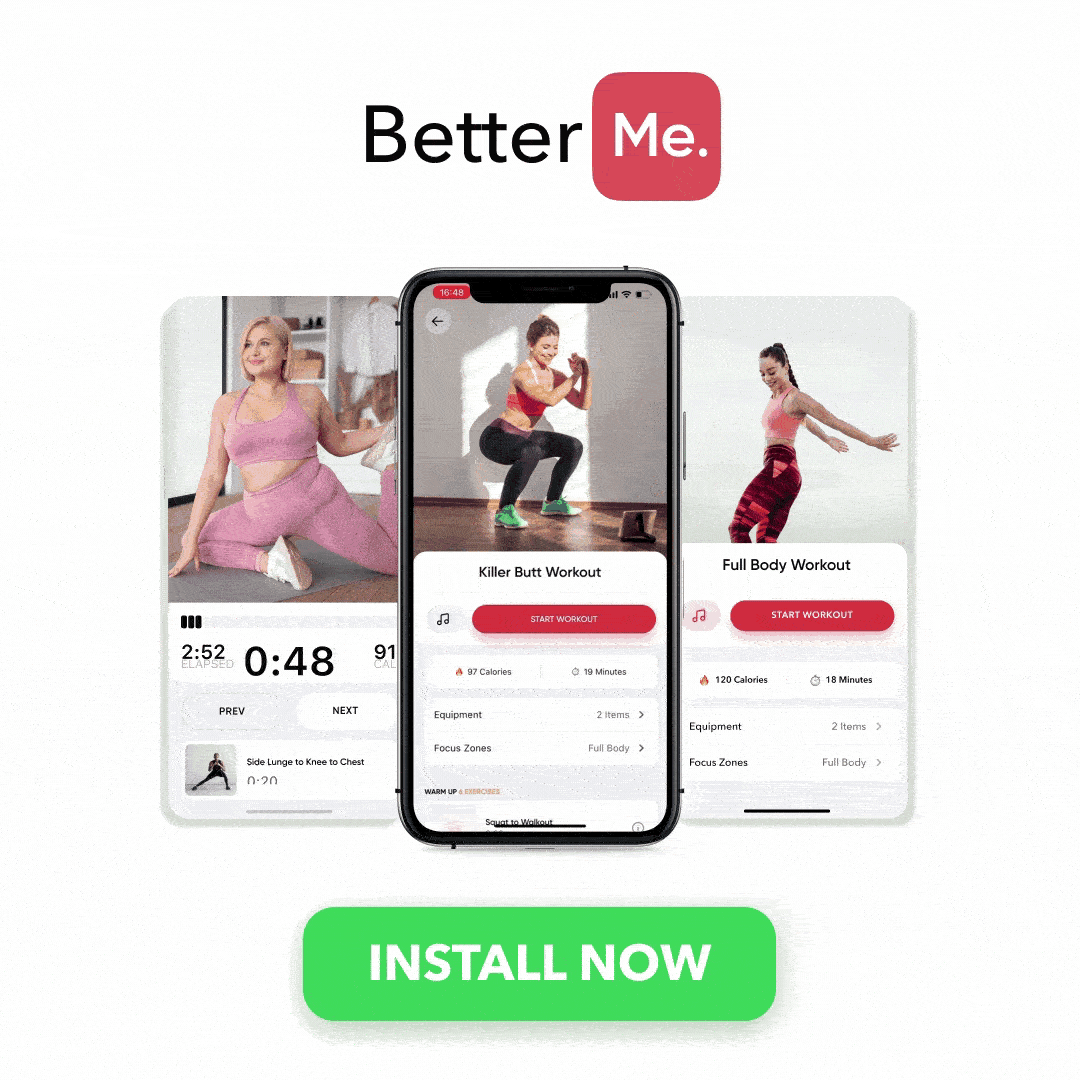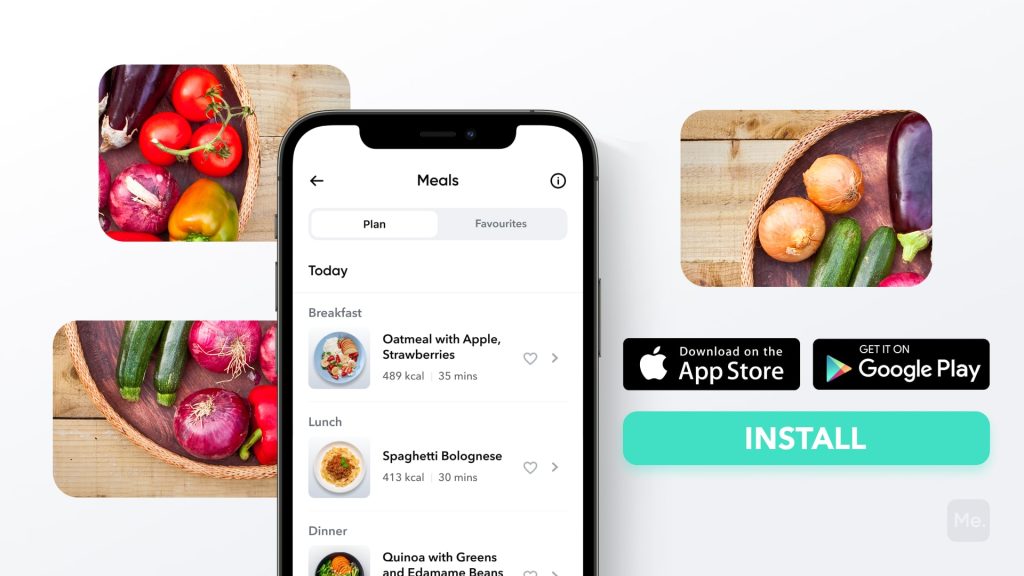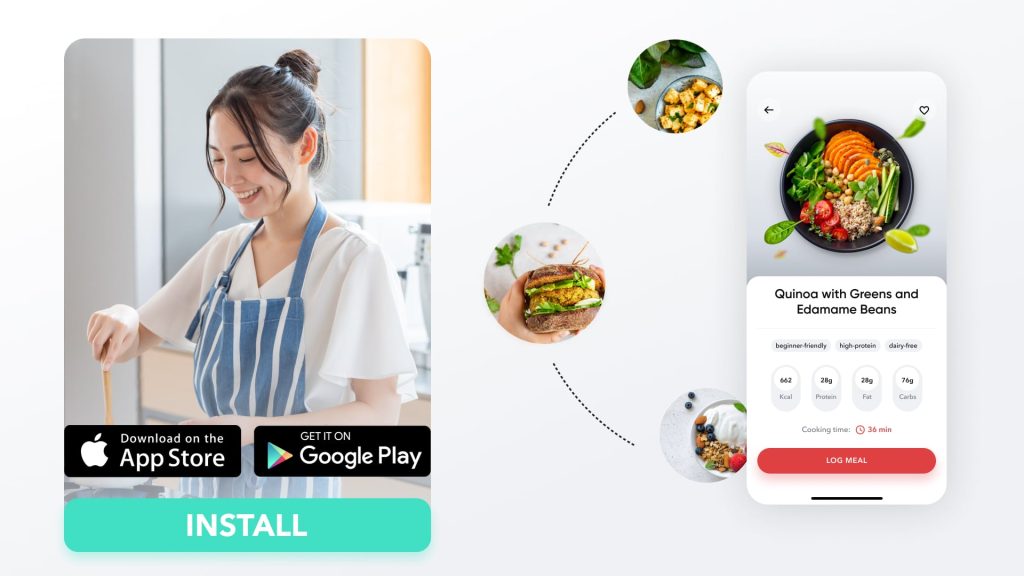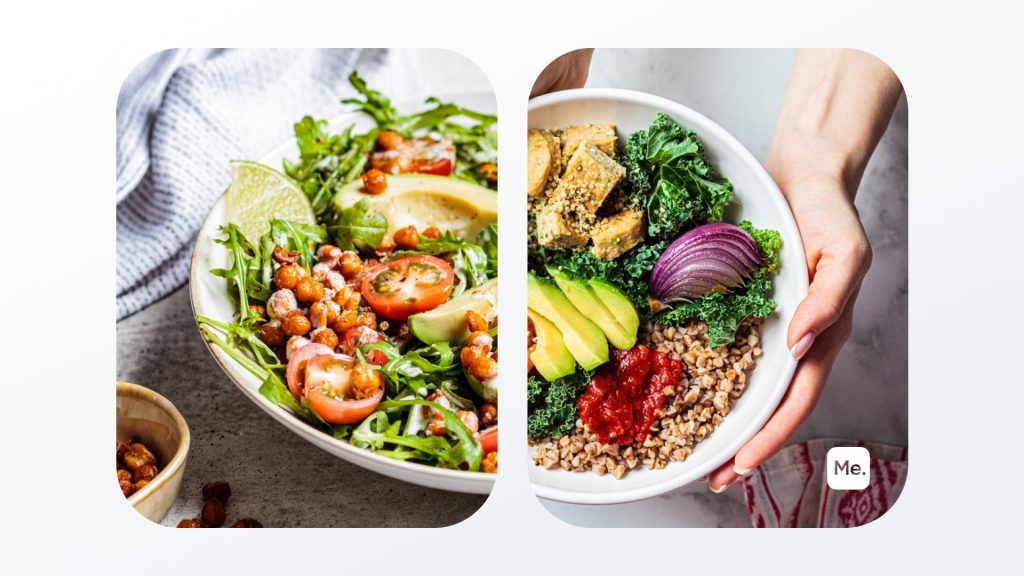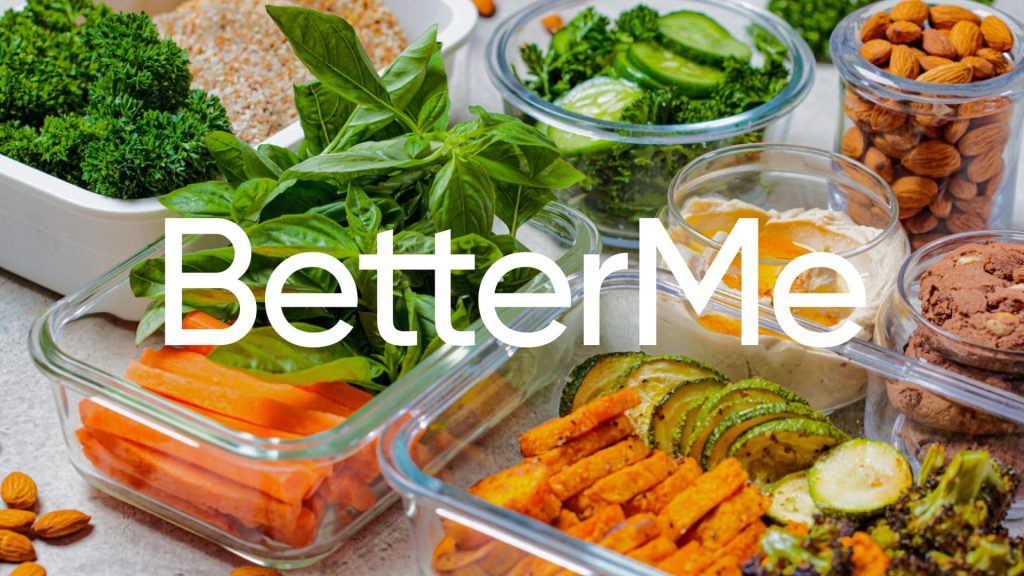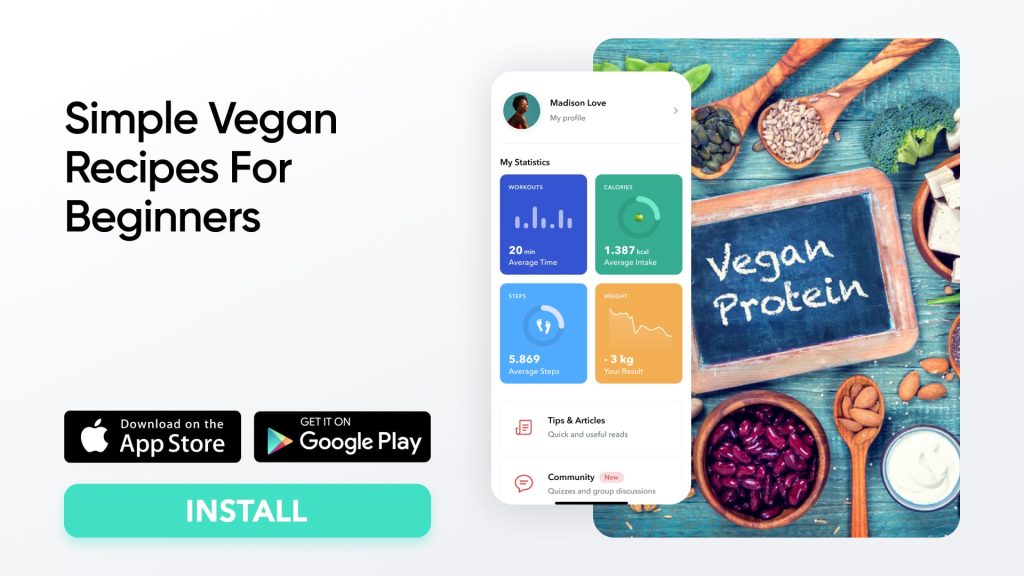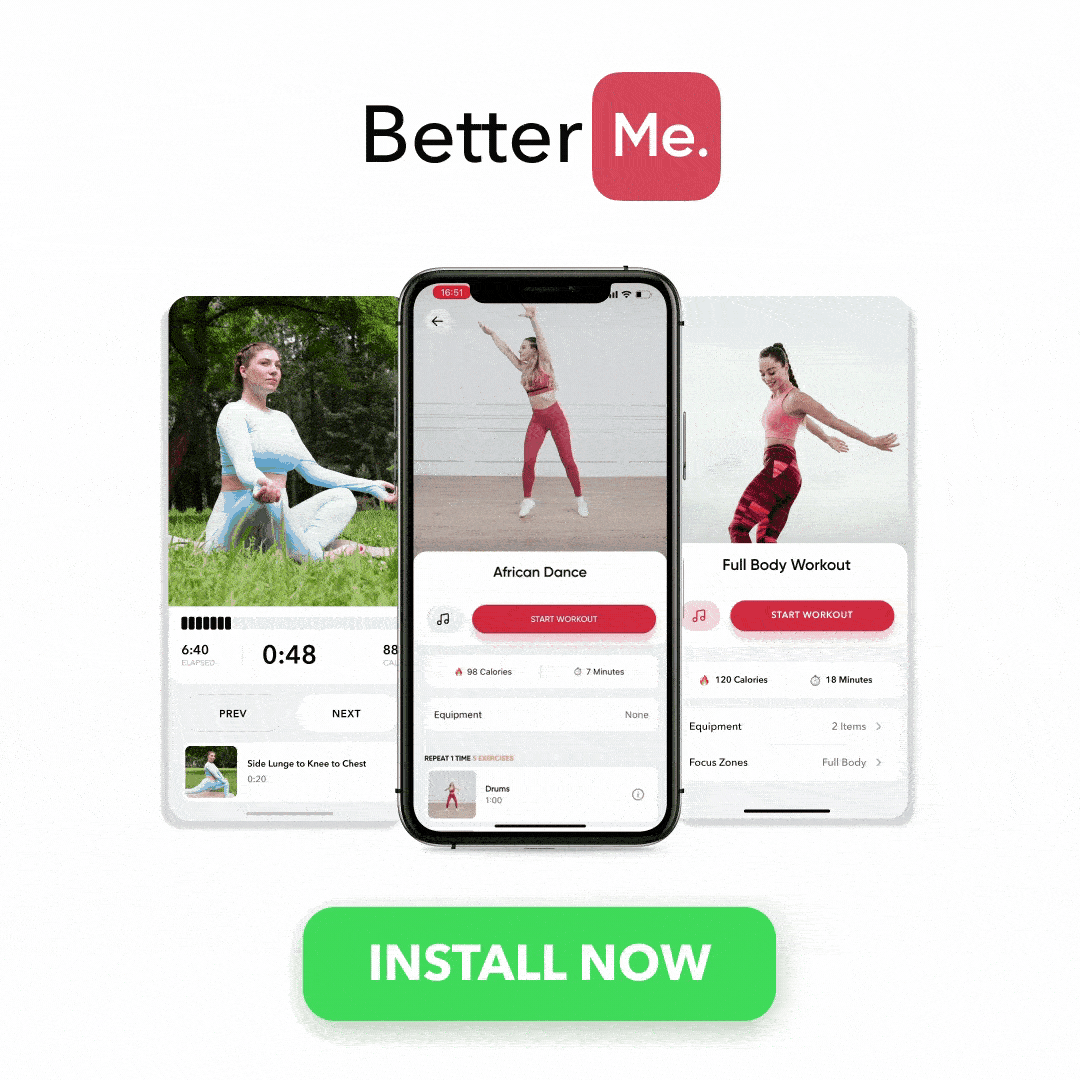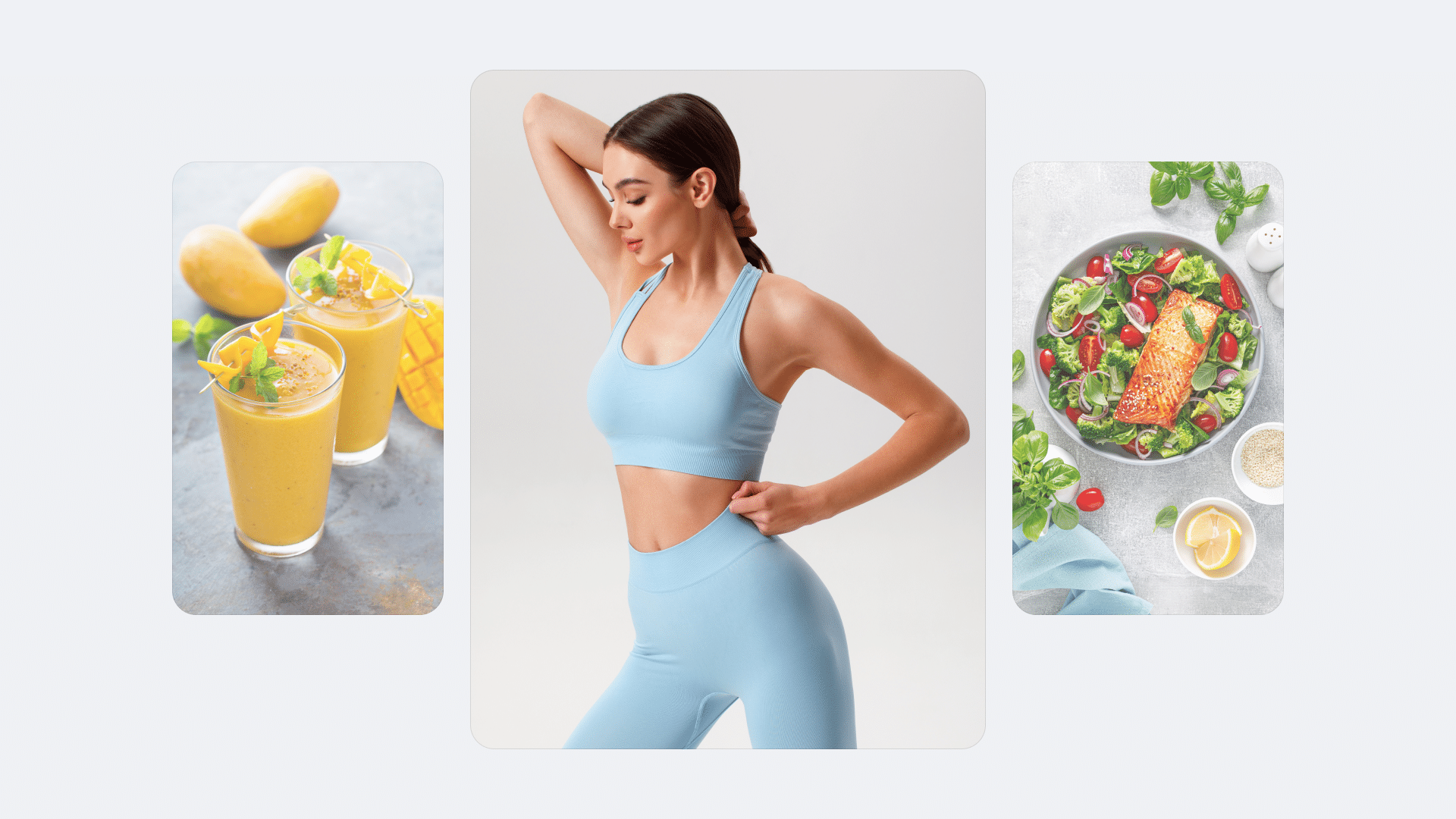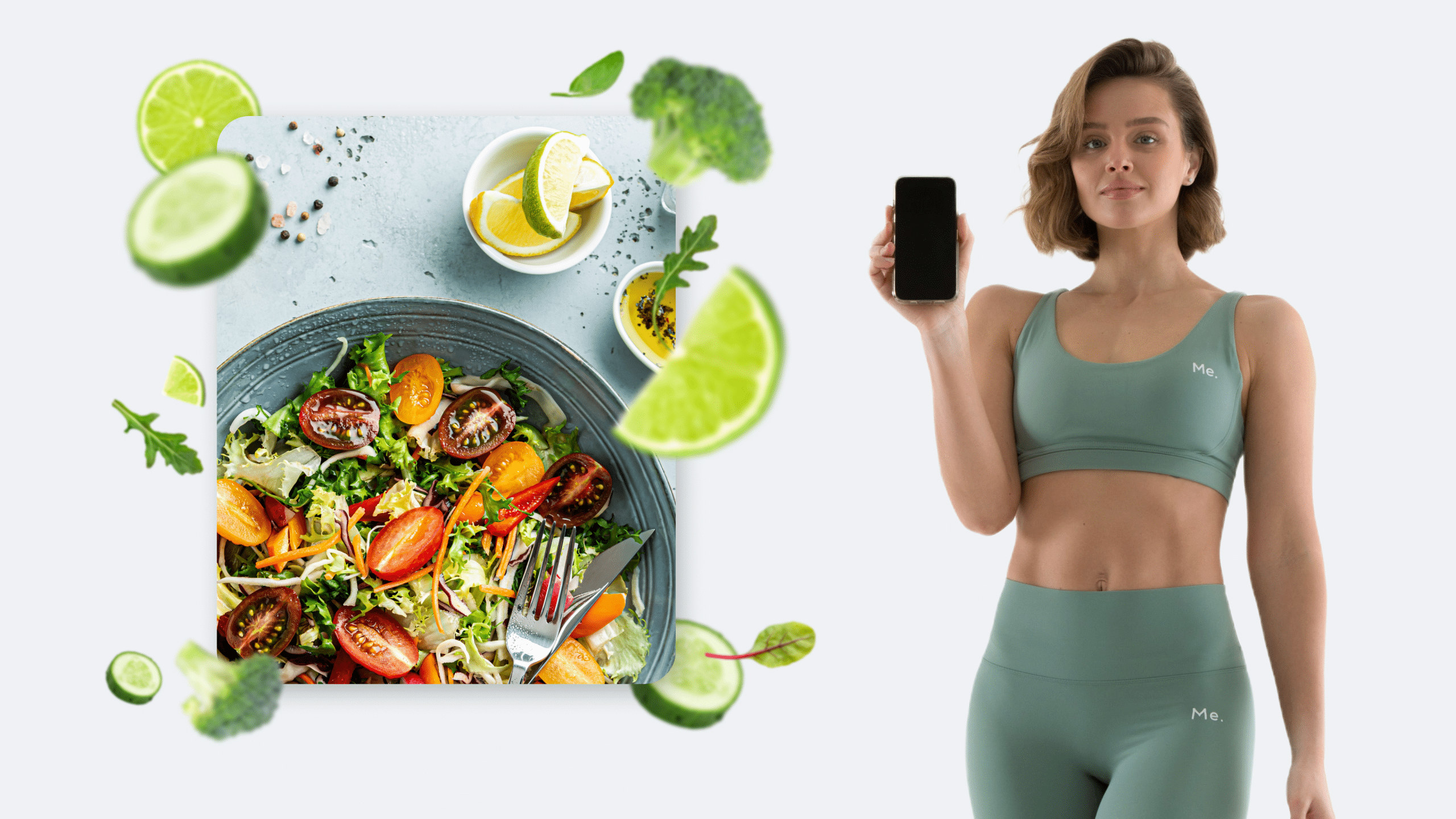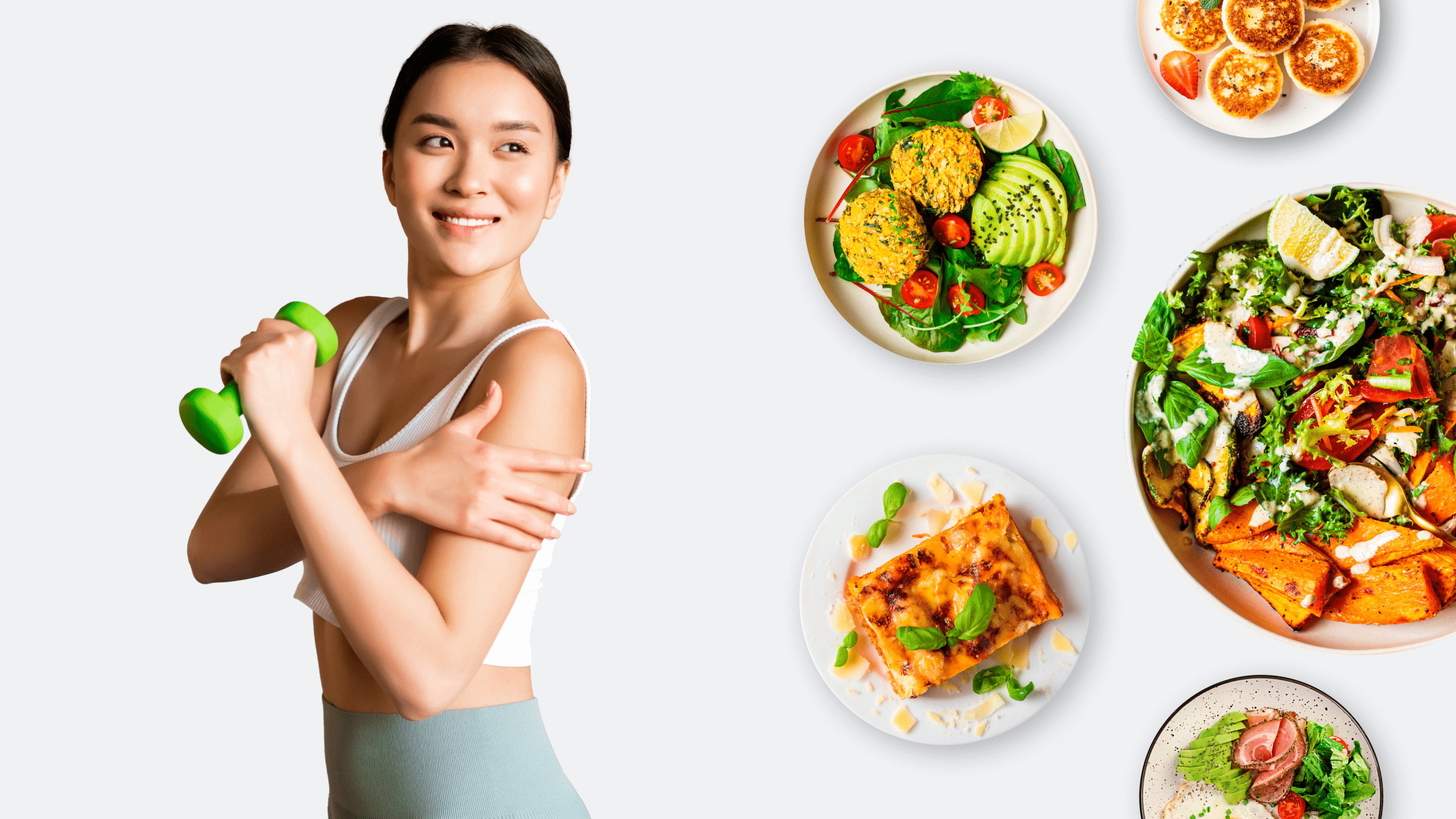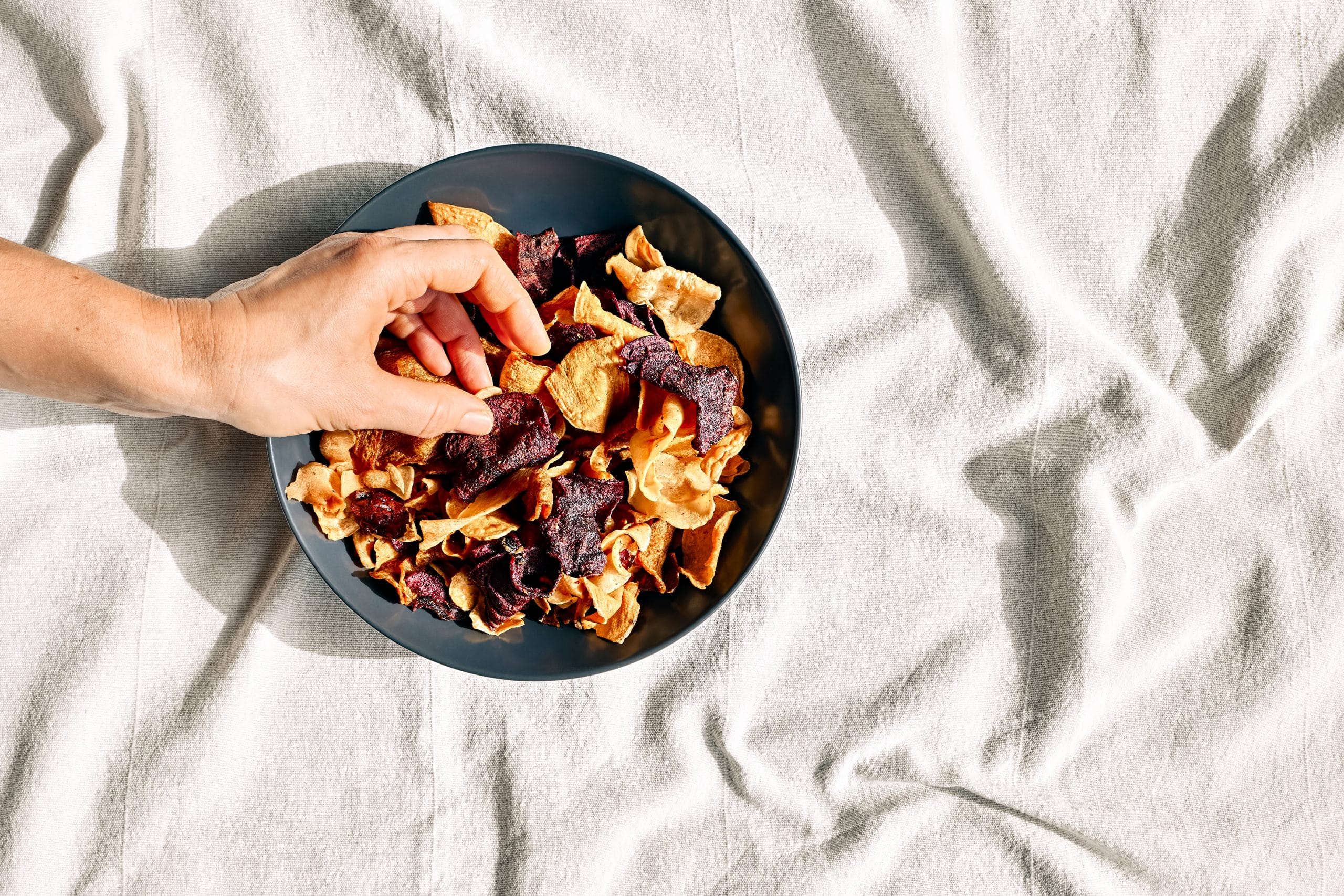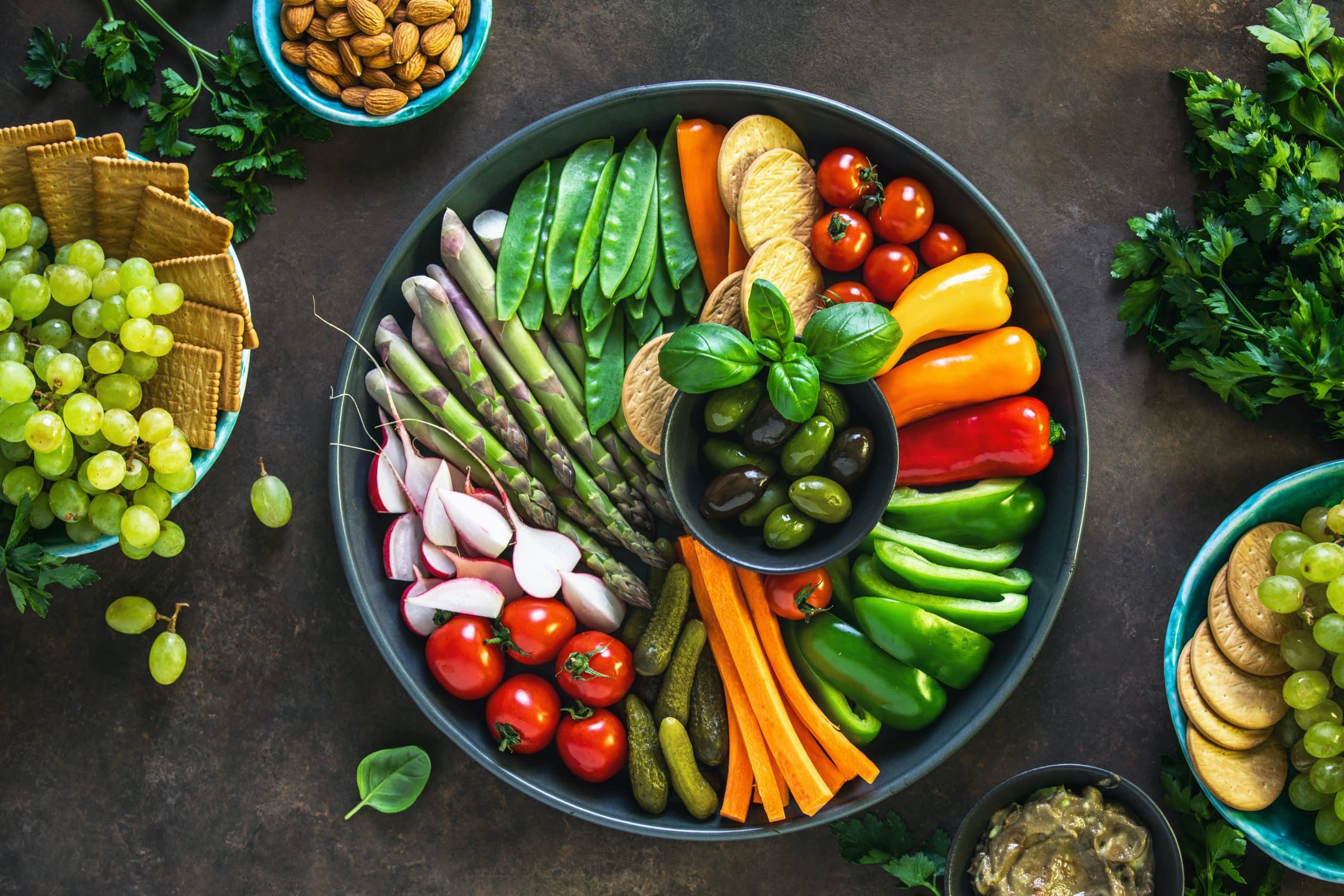Are you thinking about going vegan for the new year? Or maybe you are considering overhauling your current diet in favor of a more plant-based lifestyle, for health reasons, ethical grounds, or just out of curiosity? If this is you and you are not sure how to start a vegan diet then you are in the right place.
Plant-based diets such as veganism have taken the health and food world by storm to the extent that some restaurants and other eateries only serve vegan foods. But what can you do if you want to incorporate this eating plan in your home and everyday life without always having to order in? This is where the knowledge on how to start a vegan diet comes in.
In today’s article we are going to show you how to make a vegan diet plan, what foods are considered vegan-friendly and which ones you should avoid, how to stick to this diet plan once you start, and better yet, we shall include some simple vegan recipes for beginners to help you get started on your better health and weight loss journey.
What Is A Vegan Diet?
A vegan diet comes from veganism – a way of life that excludes all forms of animal exploitation and cruelty whether for food, clothing or any other purpose. Anyone following a vegan diet plan only consumes plants or foods that come from plants (12). Going vegan is said to help improve your health as it helps lower your risk of certain diseases, can help you lose weight, and helps protect the environment (16).
One of the most important things to learn on how to start a vegan diet is what foods are not allowed on the eating plan. These foods include (16):
- Poultry. Chicken, turkey, goose, duck, quail, ostrich, etc.
- Red meat from beef, lamb, pork, veal, etc.
- Eggs. They are considered animal products and thus should not be consumed.
- Fish and other seafood i.e. crabs, lobster, shrimp, etc.
- Dairy. Milk and milk products (cheese, butter, ice-cream, etc.) are also exempted from the approved list of vegan foods.
- Bee products. Since they come from bees, honey, bee pollen and products made from them are not considered as vegan.
Read More: The Vegan Diet: How it works, What to Eat, the Benefits
How To Start A Vegan Diet For Beginners?
Now that you have made the decision to start a vegan diet, where do you start? While you can choose to go full cold turkey and throw out all non-vegan foods from your fridge and pantry, we suggest that you choose to slowly transition yourself. Here are some things that can make the process easier:
-
Incorporate More Plant-Based Foods
As a beginner to the vegan diet, you may have realized that you will have to eat way more plant-based meals than you ever have before and it may be a little scary. To make the transition easier on yourself, start by first adding more vegetables to your meals.
Eat more salads, look up more and learn simple vegan recipes for beginners, try and eat two to three more fruits a day. This will help you and your taste buds get used to having more vegetables as a part of your diet.
-
Learn How To Cook More Vegan Dishes
Just because you are going vegan does not mean that you have to survive on lettuce alone or eat bland food. The good thing about vegetables is that they, more often than not, can soak up any flavor you add to them.
Buy more herbs and spices to add to your foods, look up vegan recipes online, or even invest in a plant-based cookbook. Chances are that if you cook delicious vegan food you are likely to stick to the meal plan in the long run.
-
Slowly Cut Out Animal Products
Like any other meal plan, it may be helpful to start a vegan diet plan by slowly transitioning over to it instead of going cold turkey. Instead of suddenly throwing out all the meats and eggs from your diet, opt by first cutting out meat and leave the eggs. Remember, do not increase the amount of eggs you consume to cover for the lack of meat, this will not serve the purpose that you need it to. After a couple of weeks, cut out the eggs as well.
-
Drop Dairy
Quitting dairy can be much easier than quitting meat and other animal products. You can easily find dairy-free alternatives at your local grocery store.
-
Look For Vegan Meat Alternatives
One of the biggest challenges for new vegans missing the taste of most foods like burgers, ice-cream, cheese, and more. If you are worried that this could lead you to cheat on your new eating plan, seek out vegan friendly alternatives of such foods.
Thankfully today you can find many brands of vegan ice-creams and other snacks, vegan cheeses that look like and taste almost like the real thing as well as meat substitutes that feel like actual meat.
After a couple weeks of slowly weaning yourself of most animal products you will eventually find it much easier to cut any remaining animal products and foods from your diets. Your palate will have gotten used to your new meal plan and you will no longer miss any of the older meals.
If you tend to let yourself off the hook, raise the white flag when things get tougher than you expected, send yourself on an unconscious binge-eating trip – BetterMe app is here to help you leave all of these sabotaging habits in the past!
How To Start And Stay Healthy On A Vegan Diet?
If you have chosen a vegan diet plan as your choice of diet for weight loss then you have made a fantastic decision; after all plant-based diets such as veganism have been dubbed as among the best diets for weight loss today (5). Some studies have even confirmed the benefits of this eating plan on weight loss:
- In 2015, a comparative study that looked at the vegan diet and four other diets showed that people who followed this eating plan had a lower BMI (body mass index) than the others did, showing that it was more effective for weight loss (9).
- In 2016, researchers reviewed 12 studies of over 1150 subjects comparing their weight loss vegetarian and non-vegetarian diets. At the end of the review, the researchers found that those who consumed a vegetarian diet overall lost 2.02 kgs more on average than those on a non-vegetarian meal plan (14).
- In 2017, a review of plant-based diets concluded that such meal plans are a viable option when it comes to for preventing overweight and obesity and promoting weight loss (7).
- A 2019 study of plant based diets (such as the vegan diet plan) showed that these kinds of eating plans help improve the feeling of satiety and increase energy expenditure in participants and thus lead to weight loss. This 2019 study also cited the above 2015 study (9) showing that in 6 months of the 2015 comparative study, those people who practiced veganism in their diet lost the largest amount of weight (11).
Now that you know this, here are some tips on how to start a vegan diet to lose weight and how to stay healthy at the same time (6, 2):
- Transition yourself into veganism. Start small. Begin by getting rid of small things like honey, and dairy then graduate to getting rid of meat and eggs from your diet. This will help make sure that you do not fall off the meal plan.
- Eat more fiber. A healthy vegan diet is chock-full of fiber. If your main concern is how to start a vegan diet to lose weight, then fiber is your friend. Once ingested, it takes longer to digest and will help keep you fuller for longer. This helps prevent unnecessary snacking and keeps you at a calorie deficit which will help with weight loss.
- Check your calorie intake. You cannot eat more calories than you burn and expect to lose weight. Remember that even healthy calories still count. Get a reputable calorie counting app to help keep your food energy intake and macros in check.
- Limit processed foods. Just because you are on a vegan diet plan does not mean that highly processed foods such as French fries and potato chips are on the table. Not only are these foods high in carbs, as well as saturated and trans fats, but they are also highly processed which makes them neither healthy nor weight loss friendly.
- Choose more nutrient dense foods. The best trick on how to start and stay healthy on a vegan diet is to always fill your plate with nutrient dense foods. Such foods are good for your because they are (8):
- Low in sugar, sodium, starches, and bad fats.
- Contain a lot of vitamins and minerals which are good for your body and help prevent against multiple illnesses
- Are not excessive in calories meaning that they are fantastic for weight loss.
- Eat more whole grains. They are complex carbs, they are higher in fiber and they are not stripped of their nutrients which means they keep you fuller for longer and provide your body with numerous nutrients.
- Learn how to properly make different vegan meals. The monotony of salads could make you fall off this eating plan. Look for ideas on how to make delicious vegan foods so you can better enjoy this meal plan.
- Read the labels. Remember that just because the label says ‘vegan-friendly’ does not automatically make it healthy. Some vegan foods are filled with saturated fats or added sugars which are bad for your heart, and eating a whole box of vegan donuts is just as bad for you as eating the same amount of regular donuts.
Vegan Grocery List For Beginners
In the table below, you will find a list of vegan friendly foods that you can use the next time you visit your local market or grocery store. Please note that this is not an exhaustive list of all the vegan foods available.
| Soy Products | Healthy Oils (Pick one or two) | Nuts & Seeds | Milk Alternatives (Preferably Unsweetened) |
|---|---|---|---|
| Tofu – Firm and Soft | Olive oil | Chia Seeds | Rice Milk |
| Tempeh | Canola Oil | Peanuts | Oat Milk |
| Edamame | Sunflower Oil | Hemp Seeds | Coconut Milk |
| Sesame Oil | Pecans | Almond Milk | |
| Avocado Oil | Flax Seeds | Hemp Milk | |
| Coconut Oil | Macadamia Nuts | Cashew Milk | |
| Sunflower Seeds | |||
| Almonds | |||
| Pumpkin Seeds | |||
| Cashews | |||
| Sesame Seeds |
| Sweeteners | Plant Protein | Wholegrains | Leafy Greens |
|---|---|---|---|
| Stevia | Black Beans | Quinoa | Lettuce |
| Maple Syrup | Lentils | Oats | Kale |
| Molasses | Peas | Couscous | Spinach |
| Agave | Chickpeas | Farro | Bok Choy |
| Cane Sugar | Mung Beans | Black, Brown, & Wild Rice | Swiss Chard |
| Dates | Pinto Beans | Seitan | Arugula |
| Kidney Beans | Whole-Wheat Bread | Collard Greens | |
| White, Lima Beans | Whole-Wheat Pasta | Microgreens | |
| String Beans, etc. | Whole-Wheat Crackers |
| Non-Starchy Vegetables | Starchy Vegetables | Fruits | Others |
|---|---|---|---|
| Cauliflower | Sweet Potatoes | Bananas | Plant-based Protein Powders |
| Eggplants | Beets | Oranges | Nut Butters |
| Celery | Butternut Squash | Watermelon | Vegan Butters |
| Mushrooms | Corn | Apples | Chocolate |
| Courgettes | Pumpkin | Grapes | Herbs |
| Broccoli | Plantain | Mangoes | Spices |
| Cucumbers | Carrots | Pineapples | |
| Tomatoes & Onions | Yams | Berries | |
| Peppers | Tarro | Lemons | |
| Asparagus | White Potatoes | Limes, etc. |
Tips On How To Start A Raw Vegan Diet
What is raw veganism? It is a subgroup of the vegan diet whereby those who follow it only consume raw foods or those that have been heated at temperatures below 40–48°C. Those who subscribe to this way of eating claim that they do this because it helps prevent them from becoming ill (15).
If you are looking to start a raw vegan diet (4):
- Your meal plan should consist of fruits, vegetables, nuts, seeds, sprouted grains and legumes.
- Meal prep is very easy since most foods are often had in their natural state or are heated slightly. Other meal preparation methods include juicing, blending, soaking, sprouting and dehydrating.
- None of your food/meal options should be refined, pasteurized, treated with pesticides or processed in any other way.
- Some people also consume dairy, raw eggs, meat and fish, although these will fall outside the scope of raw veganism but are still part of the raw food diet.
Somethings to do before starting on a raw vegan diet include (13):
- Find a support system. If you are lucky enough to recruit a friend or a family member on this journey then go ahead and do so. However, if no one in your immediate circle is willing to join you, look online for other like-minded people.
- Learn the dos and don’ts. Educate yourself on what is and what is not acceptable on a raw vegan diet.
- Meal plan. This helps you determine what foods to eat, which ones to buy, as well as how to prepare and consume them throughout the week, month, etc.
- Experiment with different recipes. Learn how to make your raw foods delicious to avoid the monotony of it. This will help you learn different flavors and ideas on what to do.
- Replace all the foods in your house, fridge, and pantry with raw vegan foods.
How To Start A Gluten-Free Vegan Diet?
If you are vegan and are now considering going gluten-free as well, here are some things that you can do to ensure that you succeed (3, 10):
- Educate yourself on what foods contain gluten. It is important to realize that many whole grain vegan friendly foods like wheat bran, wheat germ, bulgur, faro, spelt, barley, and rye contain gluten and cannot be consumed on a gluten-free vegan diet. Also be aware of which products are prone to cross-contamination, such as oats.
- Read food labels. Many foods in stores are often labeled gluten free which makes it easier for you to avoid it.
- Cook more whole foods. They will help you fulfill the nutritional needs that you may be missing by being vegan and avoiding these foods with gluten. You need to ensure that your food choices will provide your diet with nutrients such as protein, iron, calcium, vitamin D, and certain B vitamins.
- Invest in supplements. As stated above being vegan and gluten free can lead to you missing out on important nutrients. Be sure to consult your doctor for supplements that will help you get the missing minerals and vitamins.
- Look for more gluten free vegan recipes.
How To Start A No Oil Vegan Diet?
Some people choose to cook without oil as it helps to reduce the amount of calories consumed in a day. Vegan diets already tend to be lower in calories, so be careful to make sure that you are consuming enough energy, and make sure you are getting enough fat (including the essential fatty acids) from whole foods if you are not adding oil. If you are wondering how to start a no oil vegan diet, here are some things to do (1):
- Stick to non-stick pans. These types of pans and pots are better for a no oil diet as food never sticks on them. Stainless steel pans, enamel-coated cast iron and ceramic titanium pans are also good options.
- Look for oil free cooking methods. Using water and broth helps with sautéing and stir-frying your meals. Nut butters are used for baking instead of butter and vegetable stock or a light water-soy sauce mixture are used for roasting.
- Oil free condiments. With some research, many sauces and salad dressings can be easily substituted and made without oil.
Read More: Healthy Vegan Breakfast Options To Fuel Your Body For Your Day’s Activities
Simple Vegan Recipes For Beginners
Below are some simple vegan recipes that can help you learn how to incorporate vegan foods in your day-to-day and enjoy delicious meals while at it.
Option One – English breakfast
Ingredients:
2 vegan sausages and 200 g baked beans
For the hash browns: 1/2 a large peeled potato, 3/4 tbsp peanut butter
Tomatoes and mushrooms: 7 cherry tomatoes, 1 tsp maple syrup, 1/2 tsp soy sauce, a pinch of smoked paprika, 1/2 large Portebello mushroom
‘Eggs’ aka Scrambled Tofu: 175 g tofu, 1 tbsp nutritional yeast, a pinch of turmeric powder, 1 garlic clove
Method:
- Boil the 1/2 potato for 8 to 10 minutes, drain and allow to cool. Coarsely grate it, mix in the peanut butter, season it to your liking, and then store it in the fridge for later.
- Heat oven to 200 degrees Celsius. Place the cherry tomatoes onto a baking tray, drizzle with 2 tsp sunflower oil, season and bake until the skins have blistered and start to char.
- Cook the beans and sausages as per the packaging instructions.
- Mix the maple syrup, soy sauce and paprika together in a bowl, add the sliced mushroom and toss. Add 2 tsp sunflower oil into a non-stick frying pan on medium high heat. Fry the mushroom until cooked then place them onto a plate and keep them warm until serving.
- Get the potatoes from the fridge, add a tbsp of oil onto a pan, and pour in the potato mixture. Fry each side for 3 to 4 minutes before removing them from the pan and placing them on a paper towel to dry off any excess oil.
- Crumble the tofu into your frying pan and sprinkle over the remaining ingredients and a good pinch of salt and pepper. Fry for 3 to 4 mins and take off the heat.
- Place the ingredients on a plate and enjoy with some tea or coffee.
Calories: 644. Fats: 26 g, Protein: 41 g, Carbs: 56 g.
Option 2 (Lunch/Dinner) – Buddha Bowl
Ingredients – 1 tbsp avocado oil, 1/2 pack cubed extra firm tofu, 1/2 tsp soy sauce, 1/2 cup cooked sushi rice, 1 cubed green apple, 1/2 cup cubed cucumber, 1/2 cup cooked edamame, 1/2 cup radish sprouts, 1/2 sliced avocado
For the sauce – 1 small finely chopped garlic clove, 1 tsp freshly grated ginger, 1 tbsp soy sauce, 1 tsp maple syrup, 1 tsp sesame oil, 1/4 tsp sriracha
Instructions
- On medium high heat, place a non-stick pan with some oil. Add the tofu and let it cook for 2 to 3 minutes on each side until crispy. Remove it from heat and toss with 1 tsp soy sauce.
- Mix the sauce ingredients together and give the sauce a taste to see if it’s up to your liking.
- Place the rice at the bottom and then top it up with the rest of the ingredients and finally drizzle the sauce on top.
This recipe makes 2 servings.
Calories for one serving: 460. Fats: 20 g, Protein: 11.5 g, Carbs: 57 g.
BetterMe app is a foolproof way to go from zero to a weight loss hero in a safe and sustainable way! What are you waiting for? Start transforming your body now!
Option 3 (Breakfast/Snack) – Acai Bowl
Ingredients: 1/2 cup frozen pineapple chunks, 1/2 large banana, 1/4 diced mango, 99 g frozen unsweetened acai pulp, 1/2 tbsp lime juice, cold water
Toppings: 1 small handful of coconut flakes, 1/4 diced mango, 2 sliced strawberries, 1 small handful blueberries, 1 small handful pepitas
Instructions
- Prepare all the topping required. Diced the mango and strawberries and toast the coconut flakes if desired.
- Place the pineapple, banana and mango in a blender and blend then until combined but not smooth. You want the mixture to be a little chunky.
- Thaw the pulp under hot water until it can be broken up into chunks. Add it to the blender (with the blender fruits) with the lime juice and some cold water to help with the blending. Pulse and blend the mixture until smooth. Ps. Do not add too much water as the acai need to remain thick.
- Pour the mixture into a bowl, add the toppings and enjoy.
Calories: 411. Fats: 14.4 g, Protein: 8.9 g, Carbs: 71 g.
Option 4 (Snack) – Chia Pudding
Ingredients: 47 g blueberries, 5 g orange juice, 4 g chia seeds.
80 g unsweetened almond milk, 40 g light coconut milk, 1/3 tsp vanilla, 8 g maple syrup, 16 g natural salted peanut butter, 21 g chia seeds, fresh blueberries for topping
Instructions
- In a small saucepan over medium-high heat, place the blueberries and orange juice. Once the combination starts bubbling, lower heat to medium and cook for 2 minutes, while stirring occasionally. Remove from the heat, add the chia seeds, stir the mixture and then place in the fridge to cool.
- Add the almond and coconut milk to a blender, along with the vanilla, maple syrup, and peanut butter. Blend to fully combine. Add some chia seeds and pulse the mixture, taking care not to fully break all the chia seeds.
- Place the mixture in a jar, add the compote and place in the fridge to chill.
- Leave it overnight (or up to two hours) before consuming.
Calories: 211. Fats: 13.3 g, Protein: 6.1 g, Carbs: 19.1 g.
The Bottom Line
We hope that the following tips have helped you learn how to start a vegan diet. With a little practice, research, and dedication, you can easily enjoy delicious plant-based meals, which will eventually help with weight loss and prevent you from getting many illnesses. Please note that before implementing these ideas in your life, consult a doctor or a nutritionist.
DISCLAIMER:
This article is intended for general informational purposes only and does not address individual circumstances. It is not a substitute for professional advice or help and should not be relied on to make decisions of any kind. A licensed physician should be consulted for diagnosis and treatment of any medical conditions. Any action you take upon the information presented in this article is strictly at your own risk and responsibility!
SOURCES:
- 3 Expert Tips on How to Cook Without Oil (2015, forksoverknives.com)
- 6 TIPS FOR LOSING WEIGHT ON A VEGAN DIET (2018, vegnews.com)
- 6 Tips for the Gluten-Free Vegan (2013, onegreenplanet.org)
- 7-Day Plan to Start a Raw Food, Vegan Diet (2017, ecowatch.com)
- 8 Best Diets for Weight Loss in 2021, According to Experts (2020, prevention.com)
- 9 Healthy Tips to Help You Start Eating a Vegan Diet (2018, eatingwell.com)
- A plant-based diet for overweight and obesity prevention and treatment (2017, ncbi.nlm.nih.gov)
- Add more nutrient-dense foods to your diet (2015, health.harvard.edu)
- Comparative effectiveness of plant-based diets for weight loss: A randomized controlled trial of five different diets (2015, sciencedirect.com)
- How to Go Gluten-Free and Vegetarian (2020, verywellfit.com)
- Plant-Based Diets in the Reduction of Body Fat: Physiological Effects and Biochemical Insights (2019, ncbi.nlm.nih.gov)
- The vegan diet (2018, nhs.uk)
- Tips for Getting Started on a Raw Vegan Food Diet (2020, thespruceeats.com)
- Vegetarian Diets and Weight Reduction: a Meta-Analysis of Randomized Controlled Trials (2016, pubmed.ncbi.nlm.nih.gov)
- What is a raw foods diet and are there any risks or benefits associated with it? (2004, jandonline.org)
- What Is a Vegan Diet? (2019, webmd.com)


